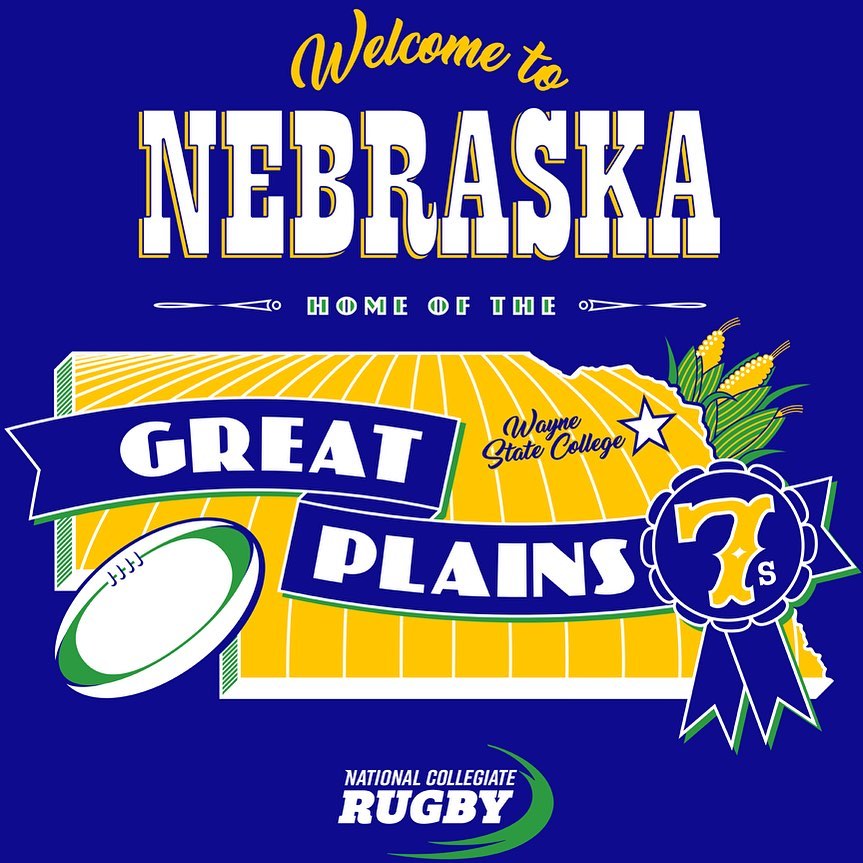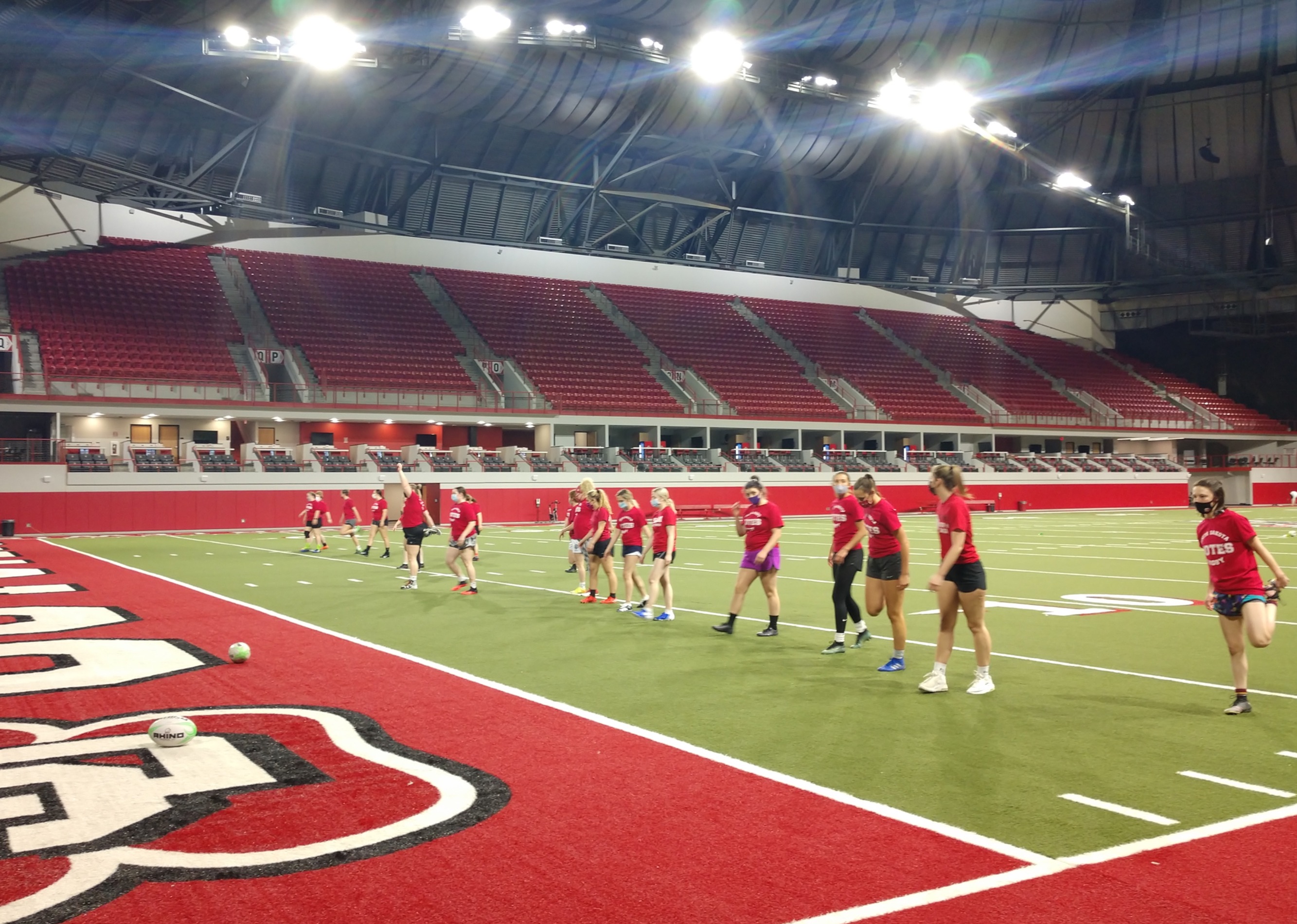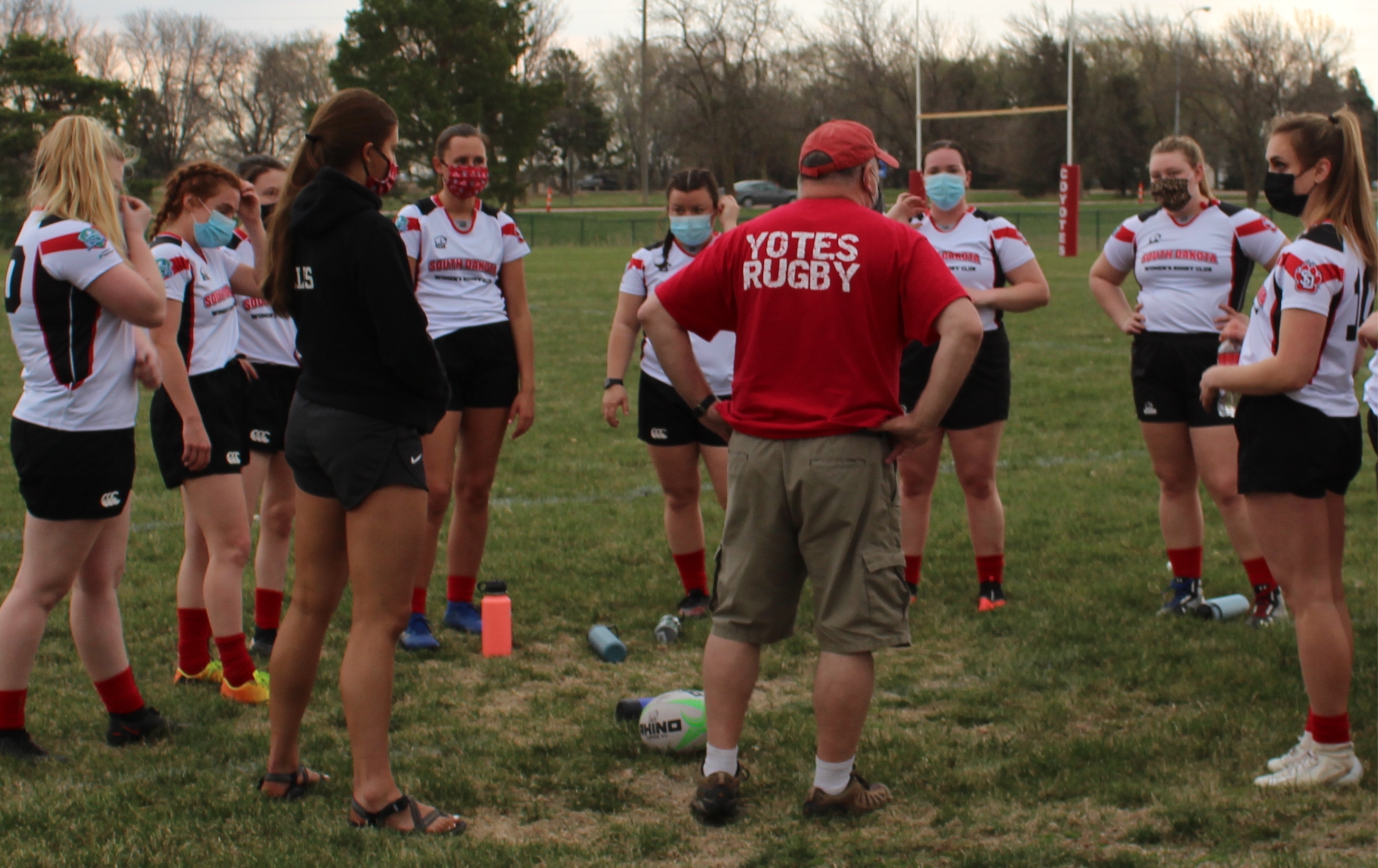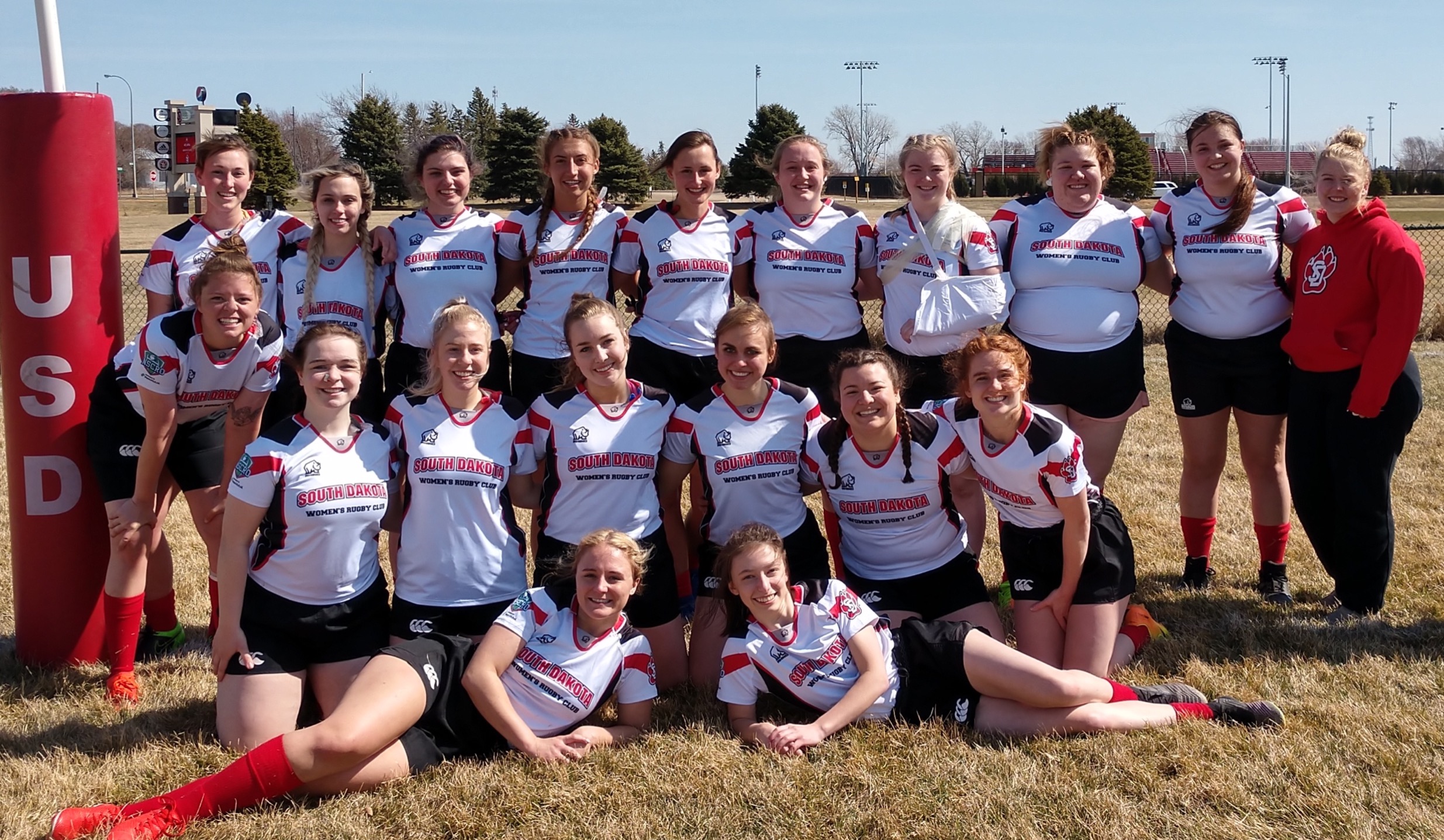It’s been a strange spring for the Prairie State Women’s Rugby Conference. While individual teams across the country have been able to play games in 2021, only the DI Elite and the Ohio Valley conference have organized competition for members who are cleared to play. Prairie States commissioner Bryn Chivers also took on the challenge that is hosting tournaments during Covid-19, and the reward was bigger than the six weekends of rugby that evolved.
“It would have been a lot easier to write off the season, because it was a lot of work to make this happen,” Chivers said. “But we got great buy-in from all of the teams. Everyone was great about tournament days and followed all of the rules and safety measures. Teams got maps of where they and their spectators could be on game day. It was really successful.”
University of South Dakota, South Dakota State Univ., Augustana Univ. (S.D.), Northwestern College (Iowa) and Wayne State College (Neb.) were all able to play this spring, while Southwest Minnesota State Univ. and Univ. Minnesota Morris were idle. Univ. Northern Iowa, Iowa State Univ. and College of St. Scholastica (Minn.) also worked into the schedule.
This weekend is the Great Plains 7s Championship, a regional event that is being managed by National Collegiate Rugby (NCR) and Darrin Barner at Wayne State College, the host site. It’s a stand-alone event in that it’s not building to another level of playoffs, and it brings together eight teams from four NCR conferences: Mid-America, Midwest, Northern Lights, Prairie States.

“So here we are in a Covid era, and my team [USD] has been able to play Iowa State and Northern Iowa – two teams we probably haven’t seen in 10 years. Same with St. Scholastica,” Chivers said. “And then this weekend, we’re playing Central Missouri – a team we’ve never played and know nothing about. After Saturday, we’ll have played 23 games this spring, so we’re playing more teams and more games than we would have in a regular season, all when everyone else has been restricted.”
Pleasant surprises have populated the conference. Several former players and assistant coaches are taking posts at understaffed programs. SDSU has seen Olivia Knippling align with Northwestern’s coaching staff, and Grace Cummiskey will coach UM Morris when it’s up and running. Chivers’ former assistant coach, Annie Dally, has also captained the Air Force Women and represented the Eastern Rockies and West U23 teams, back when LAU and territorial all-star programs existed for collegians. Dally is back in Sioux Falls for med school and is in conversations with Augustana for a coaching position.
“The conference is weirdly healthy,” Chivers said of numbers and participation.
Chivers’ own team, South Dakota, is at a tipping point, but the Yotes’ trajectory is not a mystery to the head coach. The team has important structural pieces – like a highly engaged executive committee that meets weekly – that is key to nurturing players’ ownership of the team. And that leadership pairs with a slight culture shift, one that promotes team identity with little things like requiring everyone to wear a team t-shirt to training. The leadership, structure and culture create an environment that appeals to a high school varsity athlete who isn’t looking for a totally social club. Retention is not only easier, but so is the recruitment of better talent.

Today, USD has 22 players: one senior, two juniors, six sophomores and 13 freshmen. The majority of those freshmen are from the fall, when USD won the NCR virtual season (the team just finished the design process with Rhino Rugby for its custom set of championship jerseys). They played a lot of flag, and continued to play at the beginning of 2021, and that basics-focused introduction to the sport helped retention.
The increase in numbers – specifically from first-year students – has attracted the attention of the USD rec sports department.
“They’ve really taken an interest in us,” Chivers said. “We used to be a team of a handful of women who would pick up players to play 7s. But our numbers have increased in the last two years and they see all this as moving in the right direction. Their support is quite wonderful.”
Since the Yotes’ football team had its season postponed to the spring, the domed turf field was free for the whole winter. The rugby team was able to have the entire stadium to itself for two-hour indoor practices. It is also allowed to use the new soccer pitches, and access to quality facilities improves the overall team experience.
With 22 players eager for a spring 7s season, Chivers was able to field two squads, and experimented with the idea of separate Red and White teams.
“We gave them their own identities,” Chivers said. “We posted schedules as Red and White squads. They developed relationships and playing styles that are different from each other. That helped [with retention] I think, too. Nobody felt like they were being rotated into an A side game for a bit of field time, or they were running around as filler for the A side.”

The Red team was more or less the top side and features notables like Trixie Jo Schlechter and Eden Liebenthal, who are both having very good seasons. USD Red will compete in the Great Plains 7s tournament Saturday.
“I’ve had 15 women score a try this season, and 10 are freshmen,” Chivers said. “With two squads, opportunities are falling to other people. It’s really exciting because the White squad has new leaders. Erica Oney and Carmella McManus, who have been there for a while now, are really stepping up because they have a group of freshmen they’re responsible for.”
It also helped that teams like Wayne State College fielded a B squad, so there was more opportunity to place like-quality teams against each other. Good games followed.
Chivers indicated there is lots of talent in the younger classes, but Courtney Kollis stands out. During the fall virtual season, the freshman crushed the physical challenges.
“Her numbers were just silly,” Chivers said. “She came from volleyball but she’s very fast, even with no sprint training. She doesn’t know how to start or get up on the toes for max speed. She runs heal-toe and just glides faster than everyone else.”
Unfortunately, Kollis popped cartilage in her chest during the second game of the spring season, so she lacks game experience. But in the brief period that she was able to play, she tore up the field in a four-tries-per-game kind of way. Chivers imagines bubbling her up the national team pathway once she plays more games and hones in on basic skills.
This weekend marks the final run-out for USD this season. The Yotes will face St. Scholastica in the first round of pool play; then UNI, which beat USD by a try in the teams’ last meeting; and finally Central Missouri, an unknown opponent. The other pool contains hosts Wayne State College, Iowa State, South Dakota State and a combined Kansas State/Benedictine College squad. The Yotes have been busy working with the school, filling out paperwork, and familiarizing itself with all the processes that accompany a nationals-like event. The experience will be another useful one, especially for a program with growth plans.


